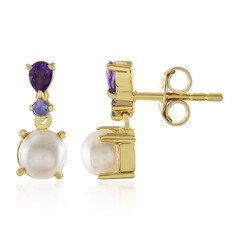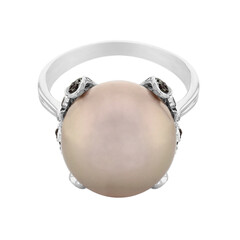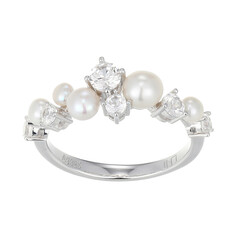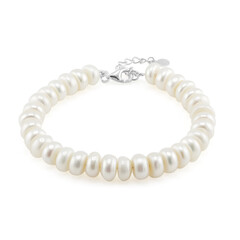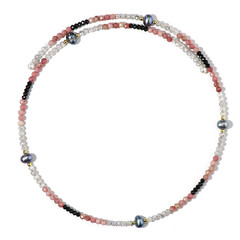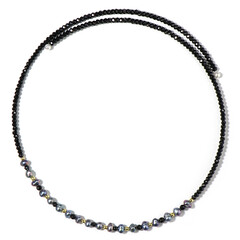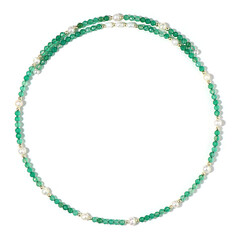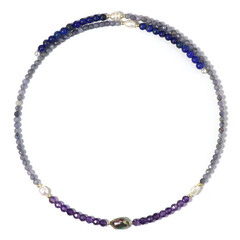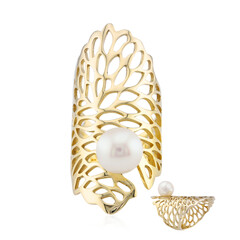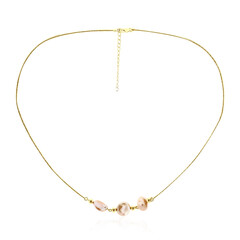Pearl
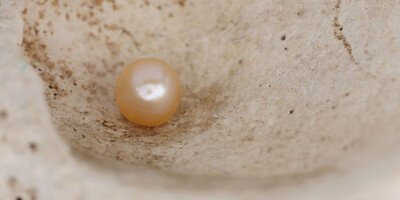
1. Introduction
Pearls, those extraordinary products of nature, have always symbolised status, grace and perfection. In ancient times, they were called ‘tears of the gods’, derived from the marvellous teardrop shape that natural baroque pearls have. Freshwater cultured pearls are just as graceful as the pearls that fishermen once harvested from the sea or lakes.
2. Name, Origin and History
Name
Pearls are differentiated according to their origin, among other things, and there are the following main types of pearls: Akoya pearls, freshwater cultured pearls, South Sea pearls and Tahitian pearls. The pollution of their original habitat in the Sea of Japan has led to the Akoya pearl also being cultivated in China, Tahiti and Vietnam today. Freshwater cultured pearls come from China and Japan, while South Sea pearls are cultivated in Australia, Indonesia and the Philippines.
Origin
Pearls are differentiated according to their origin, among other things, and there are the following main types of pearls: Akoya pearls, freshwater cultured pearls, South Sea pearls and Tahitian pearls. The pollution of their original habitat in the Sea of Japan has led to the Akoya pearl also being cultivated in China, Tahiti and Vietnam today. Freshwater cultured pearls come from China and Japan, while South Sea pearls are cultivated in Australia, Indonesia and the Philippines.
History
For a long time, the pearl was one of the most valuable gemstones of all and thus a symbol of power, prestige, social status, and wealth. Over 2,000 years ago, pearls were the most valuable thing money could buy in ancient Rome. In the first century BC, Julius Caesar even passed a law that prohibited the lower classes from wearing pearls. Queen Elizabeth I of England was known as the "Pearl Queen" due to her passion for pearls. This historical appreciation of pearls is also reflected in religious history. In the New Testament (Matthew 13:45-46), Jesus compares the Kingdom of Heaven to a "precious pearl"; in the Quran (35:33), it is said that the Kingdom of Heaven has "gardens of eternal bliss, and those who enter shall be adorned with bracelets of gold and pearls." The opening of the first commercial pearl farm in 1908 by the Japanese noodle manufacturer Kokichi Mikimoto marked a turning point: although less professional pearl farming had been carried out in China for a longer time, Mikimoto was the first to cultivate perfectly round pearls. Since the 1960s, cultured pearls have become the market standard and are now an affordable luxury.
3. Characteristics
Characteristics
Pearls are either perfectly or almost perfectly spherical, symmetrical (uniformly oval or teardrop-shaped), or baroque (amorphous and uneven). Once freed from their shell, the shimmering beauty is ready to wear and does not require a lengthy polishing process. When assessing pearls, their origin is decisive, as pearls from different regions vary in quality and price. In addition to the type of pearl, other key factors include basic colour, translucency, lustre, surface purity or texture, size, shape and symmetry, as well as the orient. There is an almost unlimited range of basic pearl body colours: apricot (yellowish-orange), black, blue, bronze (reddish-brown), champagne (pinkish-yellow), chocolate brown, cream, gold, green, grey, orange, peach (pinkish-orange), plum (reddish-violet), purple, red, violet, white, yellow, and all shades in between. The ‘orient’ or ‘intermediate tone’ is the secondary colour of the pearl and, together with the lustre, distinguishes the finest specimens. This intermediate tone of translucent colours moves over the basic colour of the pearl body, accentuating, contrasting, and enhancing the depth and brilliance of a pearl. ‘Orient’ originates from the Latin word “oriens,” which means “the rising of the sun,” aptly describing this effect. While the orient is typically monochrome, the number of colours that can ultimately be seen, and their intensity, depend on the species of pearl and its nacre. The lustre is also influenced by the thickness of the nacre, but beyond that, the surface condition of the pearl is significant. A pearl with a smooth, silky surface reflects light much better and more evenly than one with pronounced imperfections.
4. Varieties
Find out more about the fascinating variety and timeless beauty of different pearls, each of which epitomises elegance and sophistication
5. Treatment and Care
Beads should be cleaned carefully with a damp cloth.

